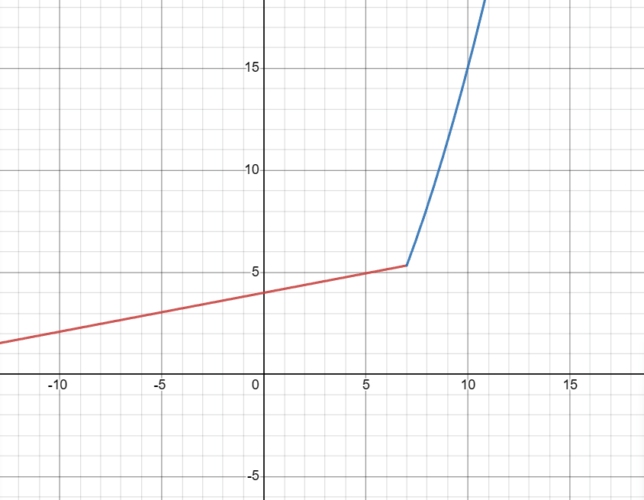To find the value of \( c \) such that the function \( f(s) \) is continuous, we need to make sure that the function is continuous at the point where the two pieces meet, which is \( s = 7 \).
The function \( f(s) \) is defined as follows:
\[ f(s) = \begin{cases} cs + 4 & \text{for } s \leq 7 \\ cs^2 – 4 & \text{for } s > 7 \end{cases} \]
For a function to be continuous at a point \( s = a \), the following three conditions must be met:
- \( f(a) \) is defined.
- \( \lim_{{s \to a}} f(s) \) exists.
- \( \lim_{{s \to a}} f(s) = f(a) \).
In this case, \( a = 7 \).
- \( f(7) \) is defined and is \( c \times 7 + 4 \).
- The limit as \( s \) approaches 7 from the left is \( c \times 7 + 4 \).
- The limit as \( s \) approaches 7 from the right is \( c \times 7^2 – 4 \).
For the function to be continuous at \( s = 7 \), these two limits must be equal:
\[ c \times 7 + 4 = c \times 7^2 – 4 \]
To find the value of \( c \), we’ll solve the equation:
\[ c \times 7 + 4 = c \times 7^2 – 4 \]
Step 1: Expand the terms
\[ 7c + 4 = 49c – 4 \]
Step 2: Move all terms to one side to set the equation to zero
\[ 49c – 7c = 4 + 4 \]
Step 3: Simplify and solve for \( c \)
\[ 42c = 8 \\ c = \frac{8}{42} \\ c = \frac{4}{21} \]
So, the value of \( c \) that makes the function \( f(s) \) continuous at \( s = 7 \) is \( \frac{4}{21} \).



